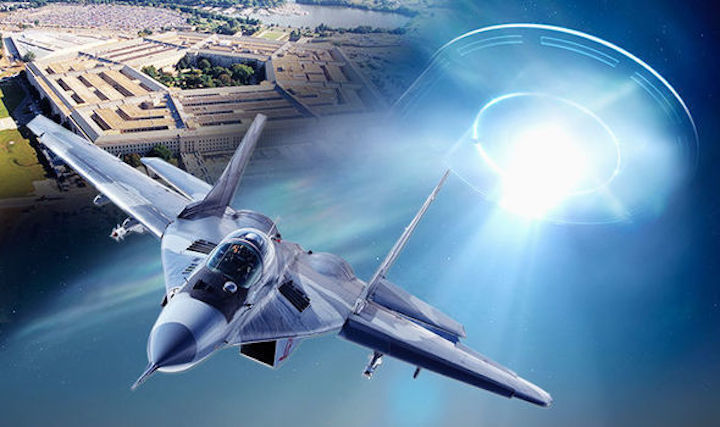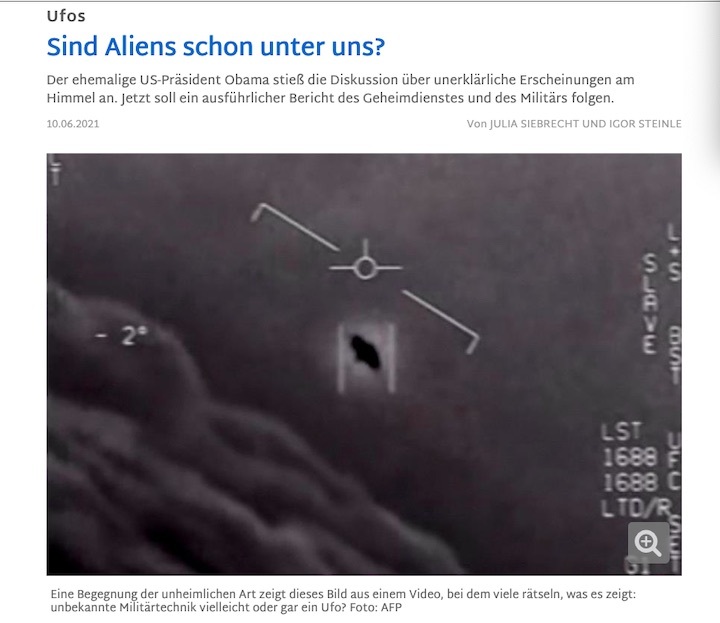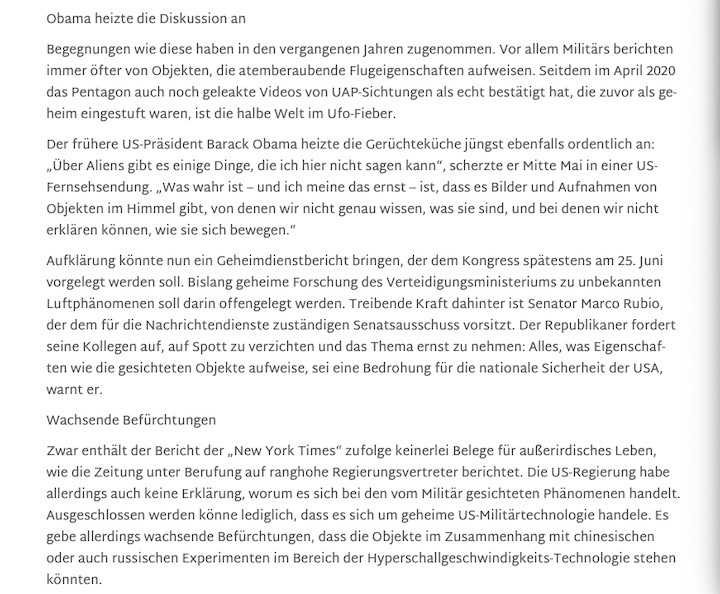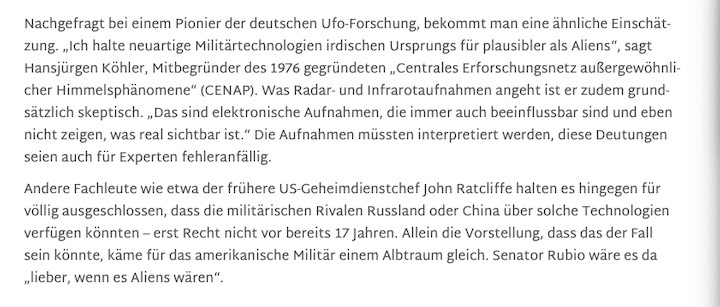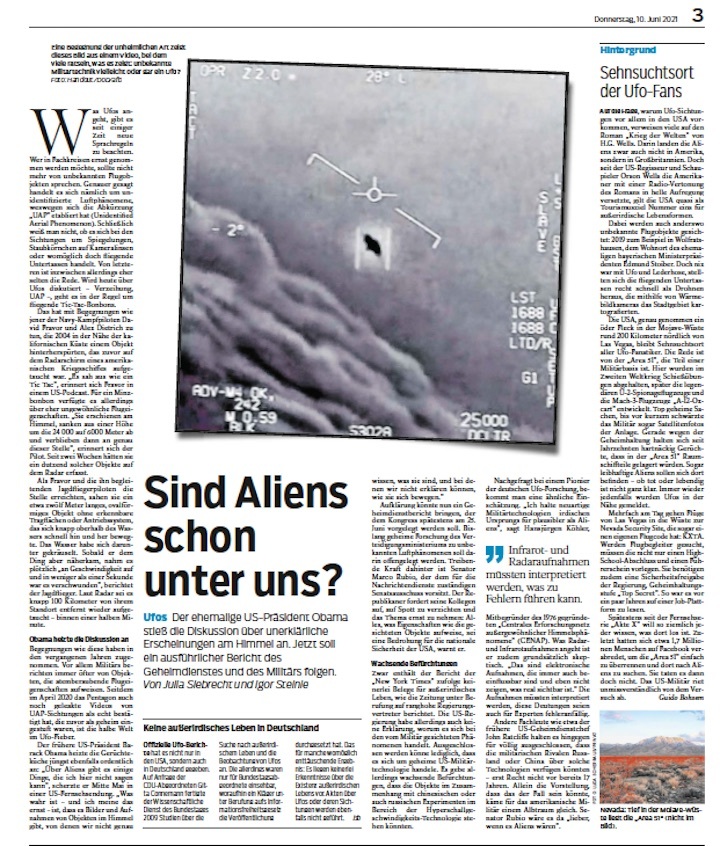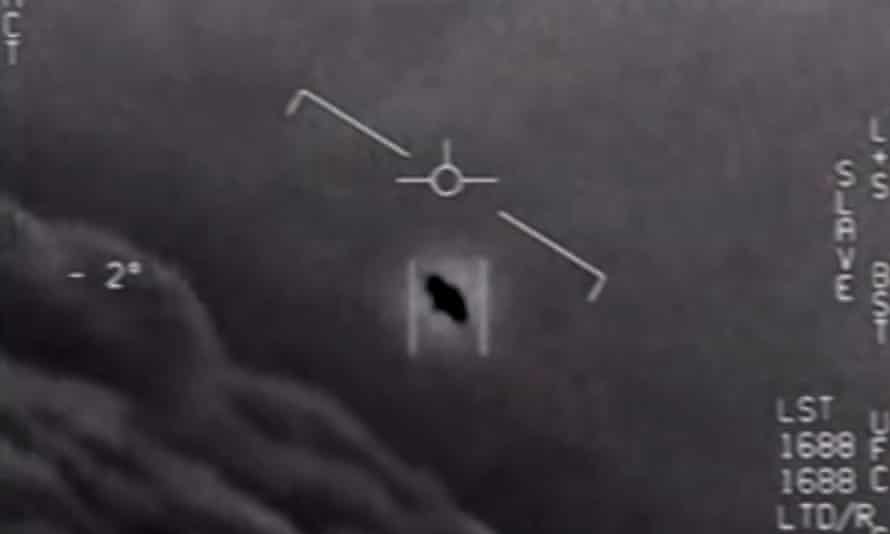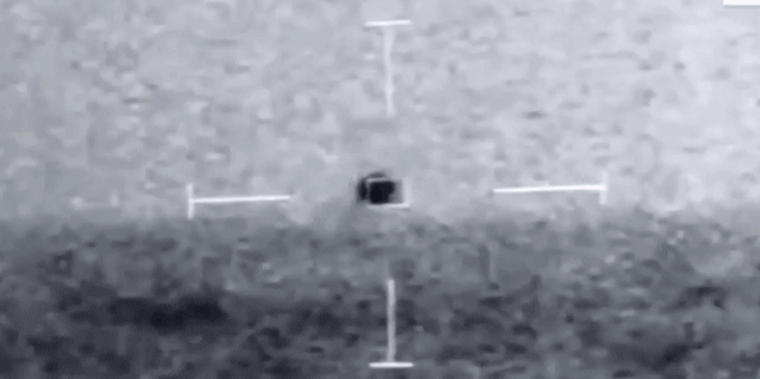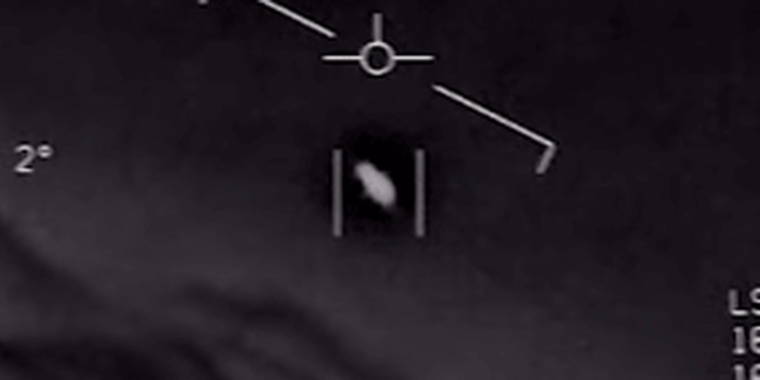There is a tidal wave of interest building up around an imminent Pentagon report on the subject of UFOs, or, as they are often referred to now, UAPs (Unidentified Aerial Phenomena). A sense of heady enthusiasm has swept over the UFO community, whose members, after suffering years being marginalized as harmless eccentrics, finally feel a sense of vindication and excitement for the coming disclosure.
I’m a science fan, and a science fiction fan. I grew up reading Arthur C Clark, Poul Anderson, Eric Frank Russell, Robert L Forward and Larry Niven. The idea of contact with aliens has always fascinated me, and I’d like nothing more than to find evidence of extraterrestrial life. But this current flap isn’t it.
In 2017 I helped solve a UFO case. Using a hi-tech infrared camera, the Chilean navy had recorded video of a mysterious object in the distance. The black-and-white footage showed a bizarre black shape flying across the sky, and at one point it seemed to emit plumes of hot gases. A special group was formed of military personnel, scientists and other experts. Over two years they carefully studied the case, eliminated all mundane possibilities, and finally concluded that this object was a “genuine unknown”. A real UFO, certified by a national military.
The research group released their conclusions and published the enigmatic video. The writer Leslie Kean wrote an effusive article in the Huffington Post lauding the development as a “groundbreaking” and “exceptional” discovery based on video and accounts from, her Chilean government sources said, “highly trained professionals with many years experience” and the “full participation” of academia and the armed forces. The UFO community rejoiced.
Three days later I, and others, identified the plane as Iberia flight 6830, departing Santiago airport. The “hot gases” were just contrails, and the odd movement was the result of a low viewing angle and a powerful zoom factor on the infrared camera. The glare from the engines obscured the plane and created the unusual shape. Radar data confirmed that the exact location of the plane matched the UFO. Case closed. UFO enthusiasts were annoyed.
Something similar seems to be playing out with the current situation with the US navy. UFO enthusiasts claim that there’s amazing evidence of UAPs, representing something incredible, and that a special group has been investigating this for years. As with the Chilean case, we are shown blurry video from military-grade infrared cameras as highly compelling evidence that has, apparently, resisted analysis.
But again, when the supposed evidence is subject to public scrutiny, the claims made about it fall away. I, along with many others, have performed deep analysis on the black-and-white videos that have served as backdrops to hundreds of media stories on UFOs. One video, codenamed “Gimbal”, seems particularly impressive: it shows what looks like an actual flying saucer skimming over the clouds.
But my experience with the Chilean UFO immediately suggested a more mundane explanation: the infrared glare from the engines of a distant jet. Some investigation confirmed this was a very likely hypothesis. I looked up the camera’s patents; these revealed a de-rotation mechanism used to correct for “gimbal roll”, which would inevitably mean glares would rotate in the manner seen in the video. This is also probably why the navy gave it the code name “Gimbal”, rather than, say, “Flying Saucer”.
Other, less impressive videos (which UFO buffs also describe as being remarkable) have quickly succumbed to analysis. “Go Fast” was not actually going fast, and was consistent with a balloon drifting in the wind. “Tic Tac” did not show a craft moving like a ping-pong ball, but instead looked more like a distant plane with the apparent movement caused by the camera switching modes and performing gimbal rolls. “Green Pyramid” looked like “the best UFO footage of all time” for two days, then I pointed out it looked exactly like an out-of-focus airliner shot in night vision with a triangular aperture.
The evidence is underwhelming. We are told there is secret, classified data we can’t see that proves something. But the people telling us this are the same people who gushingly promoted these videos as compelling evidence to the media. (Several of the New York Times’s much-discussed recent UFOpieces were co-written by Leslie Kean, who was so impressed by the Chilean case.) The History Channel’s pop-science television series Unidentified: Inside America’s UFO Investigation adopted a similar approach, trotting out “experts” to express amazement and puzzlement at what was ultimately quite explicable.
I expect the Pentagon’s forthcoming UAP report to be more of the same. It’s a government report, but with no real funding the report will probably rely on work previously done as a pet project of former senator and UFO enthusiast Harry Reid – something the Pentagon does not want to talk about because it’s a bit silly.
This is not to say there’s nothing for the military to be concerned about. There are real issues regarding unidentified sightings – drones being a major one. A distant drone, even a domestic one, is difficult to identify, and we know foreign adversaries have a strong interest in developing and using novel stealth drones for espionage and probing our defenses. There are other genuine issues, too – like anomalous radar returns and inexplicable eyewitness sightings – but there’s no evidence of aliens. There isn’t even really any good quality evidence of flying objects displaying amazing technology. There are, however, many people who want UFOs to be “real” and who feel like promoting the story will make it real. They present weak evidence as strong evidence. Don’t be fooled.
Mick West, a UFO video analyst, is the author of Escaping the Rabbit Hole
Quelle: The Guardian
+++
UFOs Aren’t Visitors from Space, Government Says. Can We be Sure?
BU security expert Jack Weinstein and astronomer Thomas Bania weigh in
The truth is out there, but for now, it doesn’t involve extraterrestrial visitors. It could, however, be a foreign power’s technology.
So concludes a forthcoming US government report, whose broad findings leaked earlier this month, on unidentified aerial phenomena (UAP), the current, less X-Files–sounding term for UFOs. The investigation followed sightings and videos recorded in recent years, by fighter aircraft instruments and pilots’ naked eyes, of objects flying at seemingly impossible speed and doing seemingly impossible maneuvers.
UFOs aren’t just the playpen of conspiracy theorists and sci-fi fans: NASA awards grants to reputable scientists seeking real-life ETs, and we’ve been scanning the heavens for signs of artificial signals for decades, says Thomas Bania, a College of Arts & Sciencesprofessor of astronomy. He researches the possibility of life elsewhere, along with many in his field. (“Carl Sagan…owes me money,” he says, a debt he knows he won’t collect, as his celebrity colleague died in 1996.)
Bania and Jack Weinstein, a Pardee School of Global Studies professor of the practice of international security and a retired Air Force lieutenant general, offered their takes on the government’s conclusions to BU Today.
Q&A
WITH THOMAS BANIA AND JACK WEINSTEIN
BU Today: Any doubts about the government’s reported conclusion that the recent sightings aren’t extraterrestrials?
Jack Weinstein: I have no expertise in UFOs except for watching Men in Black. I never flew for the Air Force—I was a nuclear and space guy. [Never] did we track something that we thought was a UFO.
My concern with the report is that [it] stated it could be a foreign power’s technology. The UFO sightings dating back into the 50s and 60s were never technology that we were able to see later on from a foreign power. That never materialized later into a foreign nation having a capability like that. I can’t comment on whether they’re UFOs or not, because I don’t want to look like a kook, to be blunt. All I’m saying is that if a foreign power developed technology, then later on, we’d see technology like that from them, either in operation or testing.
Thomas Bania: Do any of us believe these are actual flying saucers from outer space? No. [But] there really isn’t enough information to evaluate what is going on.
[The government] shows images of these objects, and they have ruled out extraterrestrial technology. Yet they then say these things have enormous speeds and do maneuvers that are impossible to replicate by our technology. All of those claims require that we know the distance to the target. Think of an airplane—if you look at a 747 in the sky, it doesn’t appear to be moving very fast. It’s going 600 miles an hour, but the rate at which a film of that plane would look [like it’s going] depends on the distance. And [the government’s] not telling us whether they know the distance. These are not [reliable] measurements of speed and acceleration unless they know the distance to the object, and they’re not telling us.
Media coverage cited experts who doubt foreign technology could have been invented without our knowing it and that it could have been kept secret.
Weinstein: I won’t go that far. China has developed some good technology much faster than we thought they were going to. To go back: if we think a foreign power has developed a technology, we would have then seen that technology later on in use or in testing.
Bania: I agree with Professor Weinstein that until these recent reports, there has never been any evidence to invoke foreign technology [as UFOs]; 90 percent of UFO reports have always had prosaic, natural explanations.
The point is, how do you interpret what these experts are responding to—the enormous speeds and maneuvers? If that’s the case, I agree we would know if somebody had developed some device that could do those maneuvers. I am questioning that interpretation of the data; without knowing the distance, there would be no evidence for enormous accelerations and avionic capabilities in terms of maneuverability.
No new technology is required here [to explain recent sightings]. We know how to build things, drones, complex electronics. So do our adversaries. You’re talking to someone who’s responsible for more than half of the UFO reports in Bergen County, N. J., in the late 1960s—my Explorers Boy Scouts specialized in creating UFOs.
Vladimir Putin claimed to have developed a super cruise missile. Is it possible he wasn’t blustering?
Weinstein: I don’t trust anything Vladimir Putin says. I put everything in the “bluster” category. If a country has developed a technology that they can use militarily that they don’t want anyone to know anything about, no one is going to ever say anything. We want to surprise the adversary on the battlefield.
Bania: I don’t think you can stealth a cruise missile to radar to the extent that you could a small drone, things the size you could buy at Micro Center in Boston.
What’s your best guess as to what these pilots saw?
Weinstein: It could be truly a UFO. I never want to say something could never be. It could be a phenomenon caused by nature—just a weather phenomenon. We learn something new every day, we’re flying at higher altitude than we’ve ever flown before, so maybe we’re seeing things that would look differently at a lower altitude.
My bottom line is: I think everyone who believes in UFOs will see a conspiracy if the government doesn’t say they are UFOs. I can’t believe we’re the most intelligent life-form in the entire universe, ’cause that means the universe is pretty dumb. If I’m an extraterrestrial and I can travel from other planets, I would think they would be smart enough to evade radar.
Bania: It’s just a pure guess, but I would think these things would be electronic warfare. They’re trying to get intelligence of exactly what our weapons systems are capable of doing, the frequencies they use, the encoding of radar transmissions, things they could use to develop countermeasures to render themselves invisible to radar. It would be either Russia or China. I’m more worried about China.
What it isn’t is little green men. If these were extraterrestrials, and they had the technology to traverse the stars and get to Earth, they would play these games? To what end? Land on the goddamn White House lawn and say hello.

